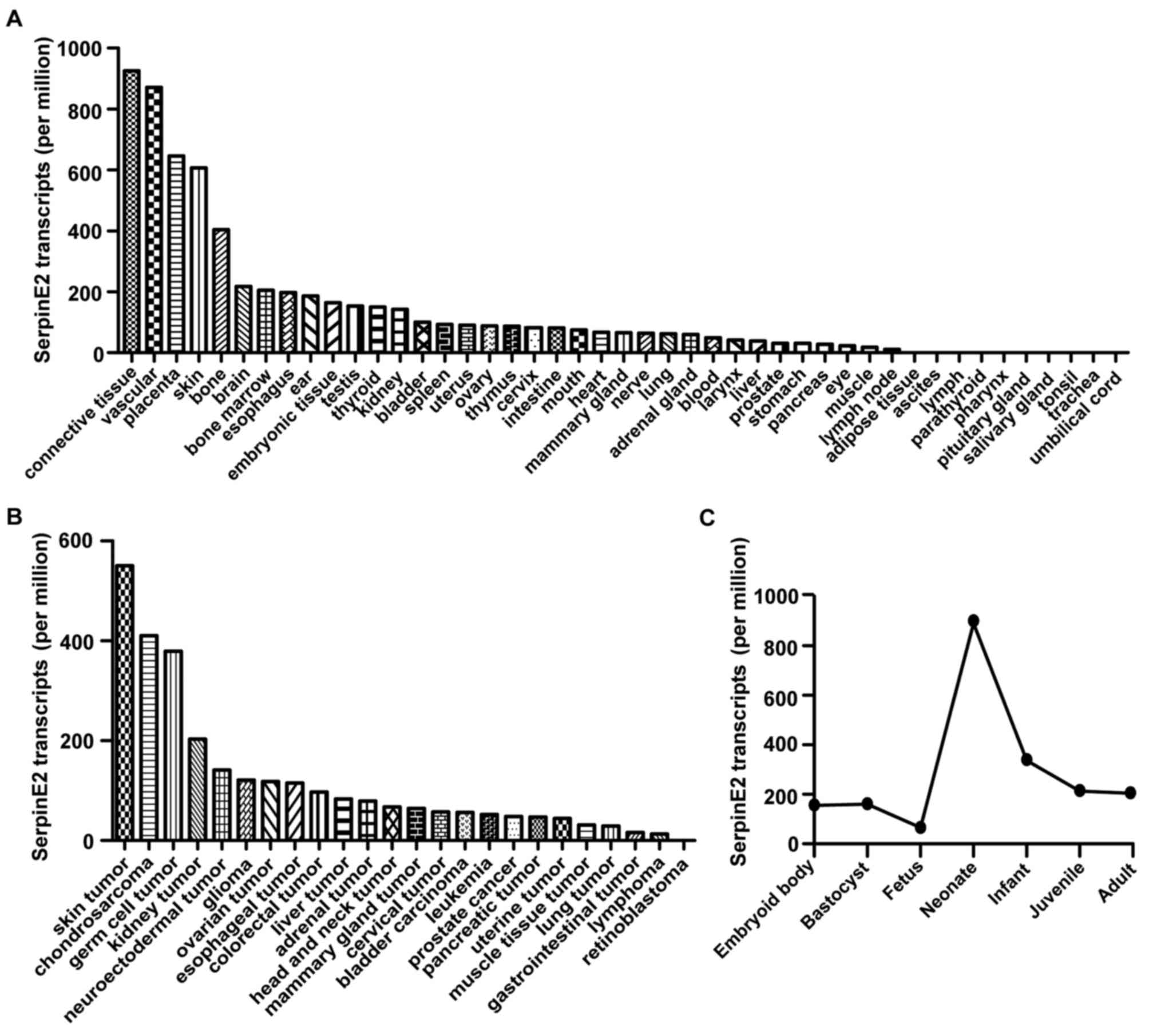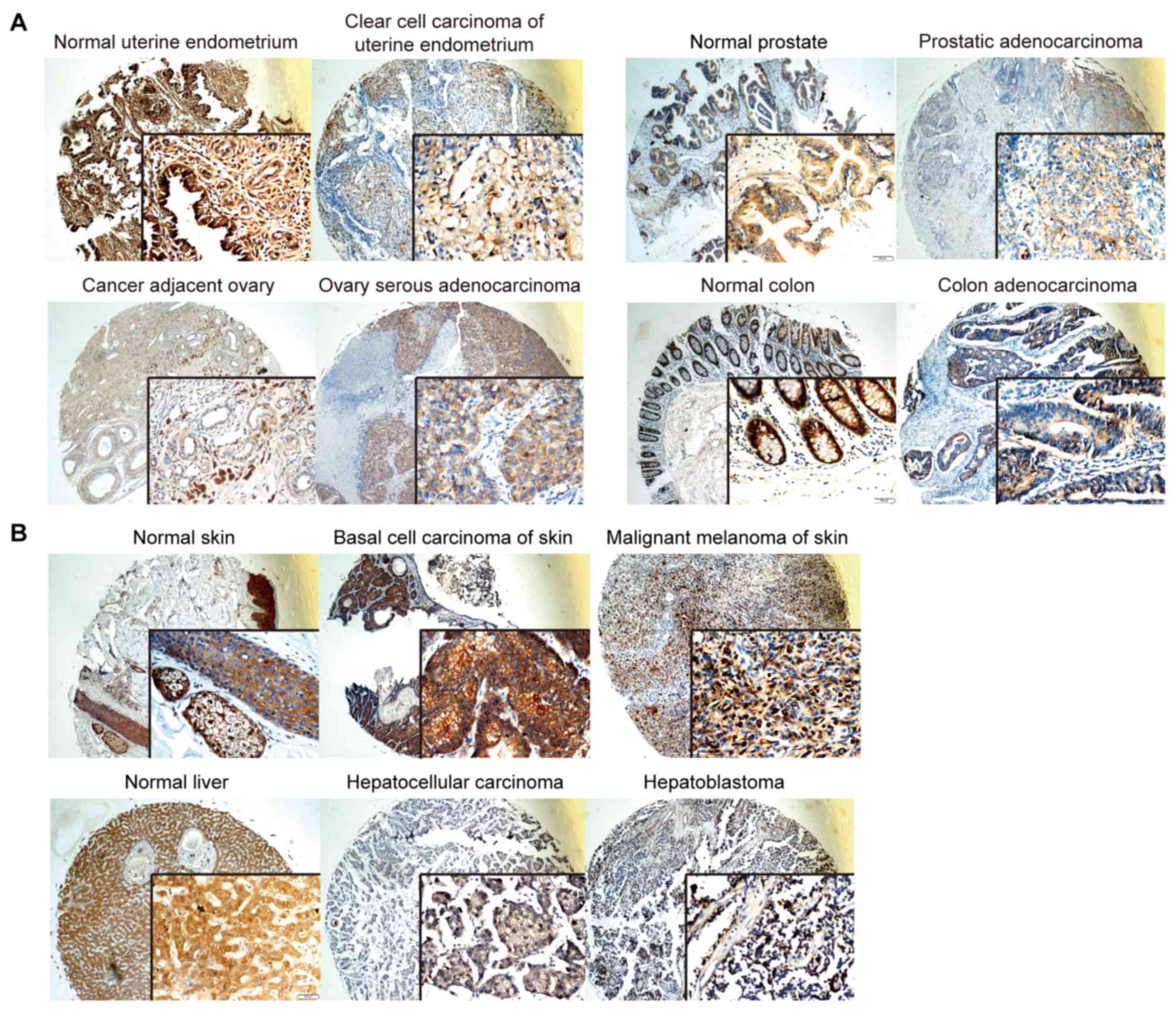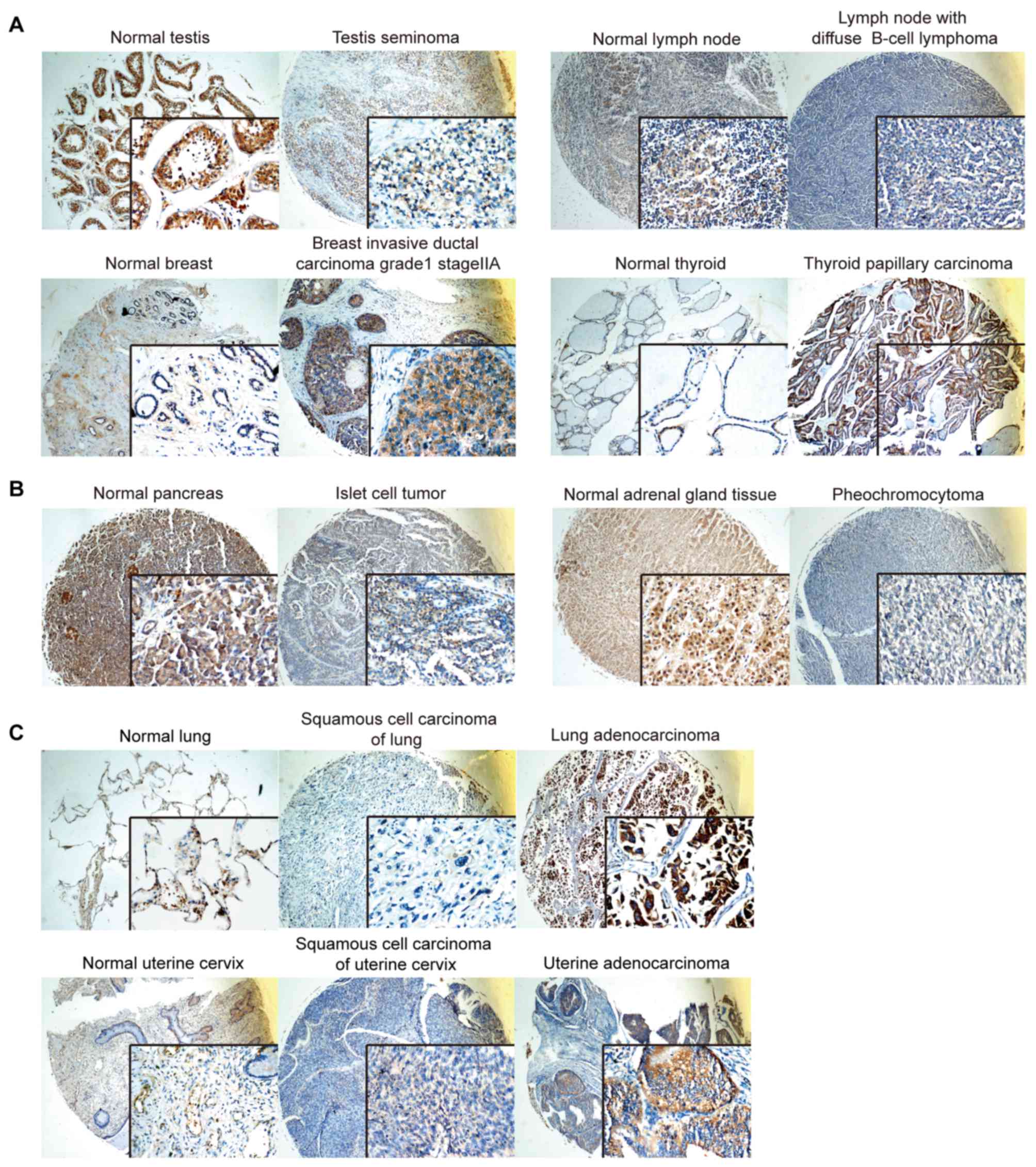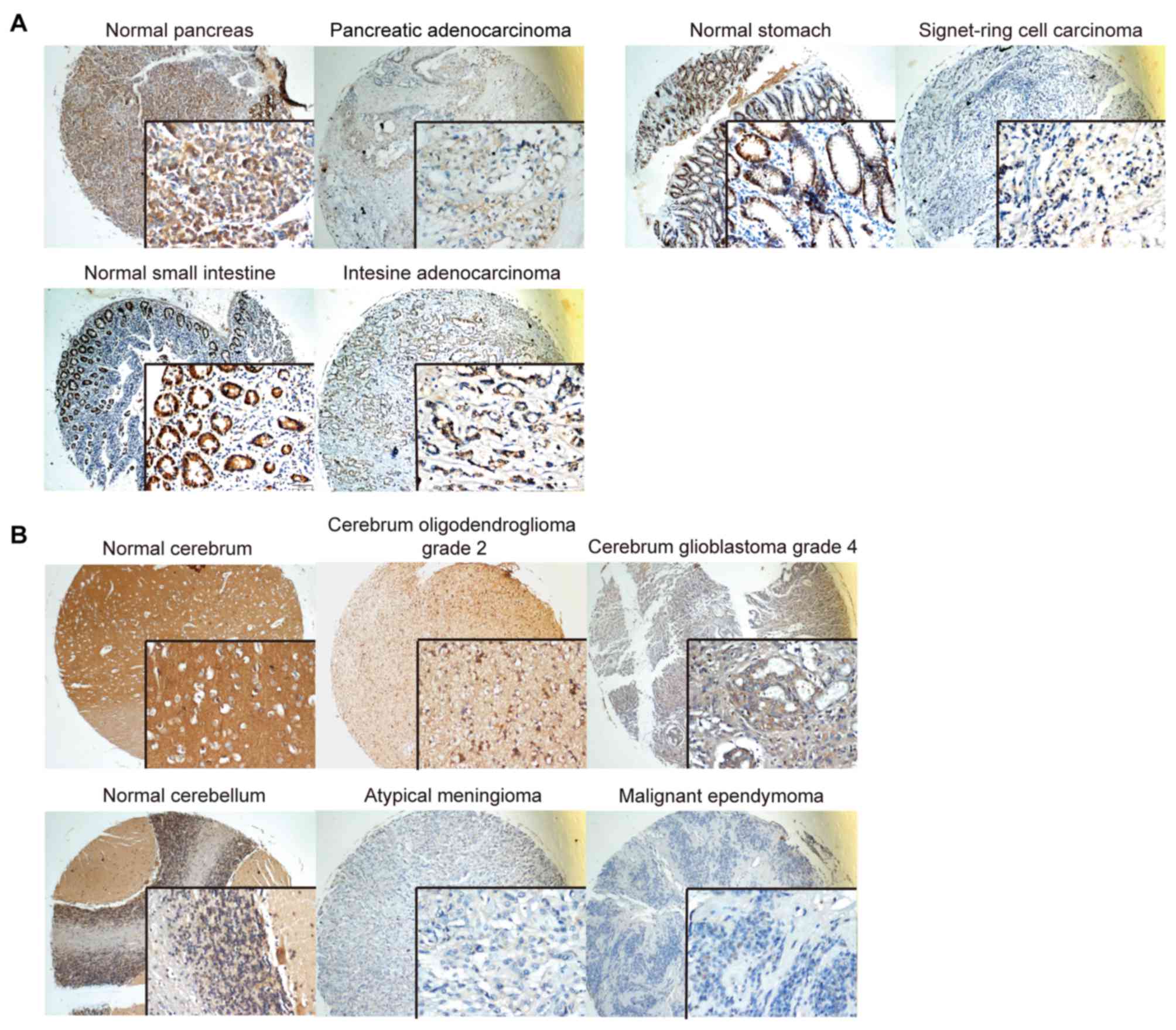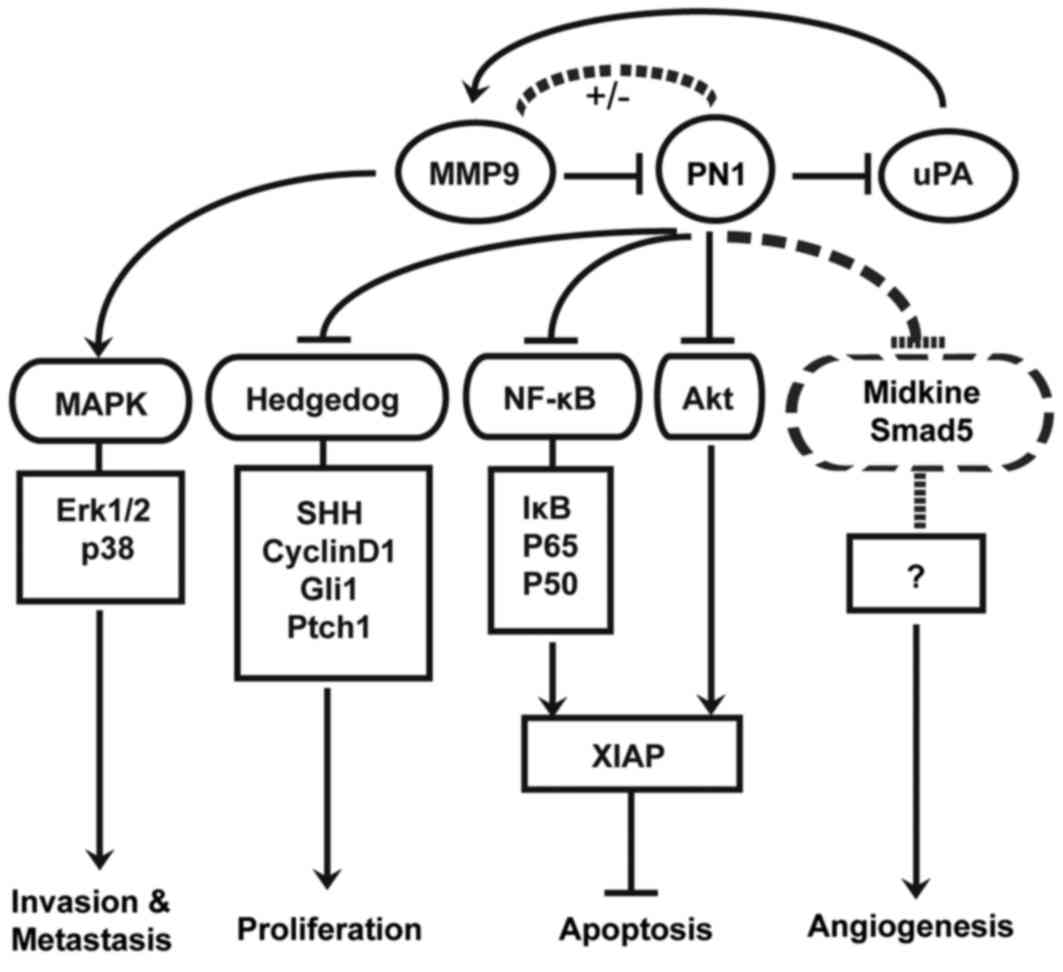|
1
|
Barde YA, Lindsay RM, Monard D and Thoenen
H: New factor released by cultured glioma cells supporting survival
and growth of sensory neurones. Nature. 274:8181978. View Article : Google Scholar : PubMed/NCBI
|
|
2
|
Guenther J, Nick H and Monard D: A
glia-derived neurite-promoting factor with protease inhibitory
activity. EMBO J. 4:1963–1966. 1985.PubMed/NCBI
|
|
3
|
Stone SR, Nick H, Hofsteenge J and Monard
D: Glial-derived neurite-promoting factor is a slow-binding
inhibitor of trypsin, thrombin and urokinase. Arch Biochem Biophys.
252:237–244. 1987. View Article : Google Scholar : PubMed/NCBI
|
|
4
|
Gloor S, Odink K, Guenther J, Nick H and
Monard D: A glia-derived neurite promoting factor with protease
inhibitory activity belongs to the protease nexins. Cell.
47:687–693. 1986. View Article : Google Scholar : PubMed/NCBI
|
|
5
|
Mansilla S, Boulaftali Y, Venisse L,
Arocas V, Meilhac O, Michel JB, Jandrot-Perrus M and Bouton MC:
Macrophages and platelets are the major source of protease nexin-1
in human atherosclerotic plaque. Arterioscler Thromb Vasc Biol.
28:1844–1850. 2008. View Article : Google Scholar : PubMed/NCBI
|
|
6
|
Fayard B, Bianchi F, Dey J, Moreno E,
Djaffer S, Hynes NE and Monard D: The serine protease inhibitor
protease nexin-1 controls mammary cancer metastasis through
LRP-1-mediated MMP-9 expression. Cancer Res. 69:5690–5698. 2009.
View Article : Google Scholar : PubMed/NCBI
|
|
7
|
Rosenblatt DE, Cotman CW, Nieto-Sampedro
M, Rowe JW and Knauer DJ: Identification of a protease inhibitor
produced by astrocytes that is structurally and functionally
homologous to human protease nexin-I. Brain Res. 415:40–48. 1987.
View Article : Google Scholar : PubMed/NCBI
|
|
8
|
McKee CM, Ding Y, Zhou J, Li C, Huang L,
Xin X, He J, Allen JE, El-Deiry WS, Cao Y, et al: Protease nexin 1
induces apoptosis of prostate tumor cells through inhibition of
X-chromosome-linked inhibitor of apoptosis protein. Oncotarget.
6:3784–3796. 2015. View Article : Google Scholar : PubMed/NCBI
|
|
9
|
Santoro A, Conde J, Scotece M, Abella V,
Lois A, Lopez V, Pino J, Gomez R, Gomez-Reino JJ and Gualillo O:
SERPINE2 Inhibits IL-1α-Induced MMP-13 Expression in Human
Chondrocytes: Involvement of ERK/NF-κB/AP-1 Pathways. PLoS One.
10:e01359792015. View Article : Google Scholar : PubMed/NCBI
|
|
10
|
Crisp RJ, Knauer DJ and Knauer MF: Roles
of the heparin and low density lipid receptor-related
protein-binding sites of protease nexin 1 (PN1) in urokinase-PN1
complex catabolism. The PN1 heparin-binding site mediates complex
retention and degradation but not cell surface binding or
internalization. J Biol Chem. 275:19628–19637. 2000. View Article : Google Scholar : PubMed/NCBI
|
|
11
|
Boulaftali Y, Ho-Tin-Noe B, Pena A, Loyau
S, Venisse L, François D, Richard B, Arocas V, Collet JP,
Jandrot-Perrus M and Bouton MC: Platelet protease nexin-1, a serpin
that strongly influences fibrinolysis and thrombolysis.
Circulation. 123:1326–1334. 2011. View Article : Google Scholar : PubMed/NCBI
|
|
12
|
Kitamura K and Tomita K: Regulation of
renal sodium handling through the interaction between serine
proteases and serine protease inhibitors. Clin Exp Nephrol.
14:405–410. 2010. View Article : Google Scholar : PubMed/NCBI
|
|
13
|
Zheng D, Chen H, Davids J, Bryant M and
Lucas A: Serpins for diagnosis and therapy in cancer. Cardiovasc
Hematol Disord Drug Targets. 13:123–132. 2013. View Article : Google Scholar : PubMed/NCBI
|
|
14
|
Buchholz M, Biebl A, Neesse A, Wagner M,
Iwamura T, Leder G, Adler G and Gress TM: SERPINE2 (protease nexin
I) promotes extracellular matrix production and local invasion of
pancreatic tumors in vivo. Cancer Res. 63:4945–4951.
2003.PubMed/NCBI
|
|
15
|
Bergeron S, Lemieux E, Durand V, Cagnol S,
Carrier JC, Lussier JG, Boucher MJ and Rivard N: The serine
protease inhibitor serpinE2 is a novel target of ERK signaling
involved in human colorectal tumorigenesis. Mol Cancer. 9:2712010.
View Article : Google Scholar : PubMed/NCBI
|
|
16
|
Wang K, Wang B, Xing AY, Xu KS, Li GX and
Yu ZH: Prognostic significance of SERPINE2 in gastric cancer and
its biological function in SGC7901 cells. J Cancer Res Clin Oncol.
141:805–812. 2015. View Article : Google Scholar : PubMed/NCBI
|
|
17
|
Stępień T, Brożyna M, Kuzdak K, Motylewska
E, Komorowski J, Stępień H and Ławnicka H: Elevated concentrations
of SERPINE2/protease nexin-1 and secretory leukocyte protease
inhibitor in the serum of patients with papillary thyroid cancer.
Dis Markers. 2017:49621372017. View Article : Google Scholar : PubMed/NCBI
|
|
18
|
Gao S, Krogdahl A, Sørensen JA, Kousted
TM, Dabelsteen E and Andreasen PA: Overexpression of protease
nexin-1 mRNA and protein in oral squamous cell carcinomas. Oral
Oncol. 44:309–313. 2008. View Article : Google Scholar : PubMed/NCBI
|
|
19
|
Mao M and Wang W: SerpinE2 promotes
multiple cell proliferation and drug resistance in osteosarcoma.
Mol Med Rep. 14:881–887. 2016. View Article : Google Scholar : PubMed/NCBI
|
|
20
|
Nagahara A, Nakayama M, Oka D, Tsuchiya M,
Kawashima A, Mukai M, Nakai Y, Takayama H, Nishimura K, Jo Y, et
al: SERPINE2 is a possible candidate promotor for lymph node
metastasis in testicular cancer. Biochem Biophys Res Commun.
391:1641–1646. 2010. View Article : Google Scholar : PubMed/NCBI
|
|
21
|
McKee CM, Xu D, Cao Y, Kabraji S, Allen D,
Kersemans V, Beech J, Smart S, Hamdy F, Ishkanian A, et al:
Protease nexin 1 inhibits hedgehog signaling in prostate
adenocarcinoma. J Clin Invest. 122:4025–4036. 2012. View Article : Google Scholar : PubMed/NCBI
|
|
22
|
Xu D, McKee CM, Cao Y, Ding Y, Kessler BM
and Muschel RJ: Matrix metalloproteinase-9 regulates tumor cell
invasion through cleavage of protease nexin-1. Cancer Res.
70:6988–6998. 2010. View Article : Google Scholar : PubMed/NCBI
|
|
23
|
McKee CM, Xu D and Muschel RJ: Protease
nexin 1: A novel regulator of prostate cancer cell growth and
neo-angiogenesis. Oncotarget. 4:1–2. 2013. View Article : Google Scholar : PubMed/NCBI
|
|
24
|
Pagliara V, Adornetto A, Mammi M, Masullo
M, Sarnataro D, Pietropaolo C and Arcone R: Protease Nexin-1
affects the migration and invasion of C6 glioma cells through the
regulation of urokinase plasminogen activator and matrix
metalloproteinase-9/2. Biochim Biophys Acta. 1843:2631–2644. 2014.
View Article : Google Scholar : PubMed/NCBI
|
|
25
|
Vaillant C, Valdivieso P, Nuciforo S, Kool
M, Schwarzentruber-Schauerte A, Méreau H, Cabuy E, Lobrinus JA,
Pfister S, Zuniga A, et al: Serpine2/PN-1 is required for
proliferative expansion of pre-neoplastic lesions and malignant
progression to medulloblastoma. PLoS One. 10:e01248702015.
View Article : Google Scholar : PubMed/NCBI
|
|
26
|
Boguski MS and Schuler GD: ESTablishing a
human transcript map. Nat Genet. 10:369–371. 1995. View Article : Google Scholar : PubMed/NCBI
|
|
27
|
Selbonne S, Azibani F, Iatmanen S,
Boulaftali Y, Richard B, Jandrot-Perrus M, Bouton MC and Arocas V:
In vitro and in vivo antiangiogenic properties of the serpin
protease nexin-1. Mol Cell Biol. 32:1496–1505. 2012. View Article : Google Scholar : PubMed/NCBI
|
|
28
|
Selbonne S, Francois D, Raoul W,
Boulaftali Y, Sennlaub F, Jandrot-Perrus M, Bouton MC and Arocas V:
Protease nexin-1 regulates retinal vascular development. Cell Mol
Life Sci. 72:3999–4011. 2015. View Article : Google Scholar : PubMed/NCBI
|
|
29
|
Li X, Herz J and Monard D: Activation of
ERK signaling upon alternative protease nexin-1 internalization
mediated by syndecan-1. J Cell Biochem. 99:936–951. 2006.
View Article : Google Scholar : PubMed/NCBI
|
|
30
|
Xu D, Suenaga N, Edelmann MJ, Fridman R,
Muschel RJ and Kessler BM: Novel MMP-9 substrates in cancer cells
revealed by a label-free quantitative proteomics approach. Mol Cell
Proteomics. 7:2215–2228. 2008. View Article : Google Scholar : PubMed/NCBI
|
|
31
|
Chern SR, Li SH, Lu CH and Chen EI:
Spatiotemporal expression of the serine protease inhibitor,
SERPINE2, in the mouse placenta and uterus during the estrous
cycle, pregnancy, and lactation. Reprod Biol Endocrinol. 8:1272010.
View Article : Google Scholar : PubMed/NCBI
|
|
32
|
Lee RK, Fan CC, Hwu YM, Lu CH, Lin MH,
Chen YJ and Li SH: SERPINE2, an inhibitor of plasminogen
activators, is highly expressed in the human endometrium during the
secretory phase. Reprod Biol Endocrinol. 9:382011. View Article : Google Scholar : PubMed/NCBI
|
|
33
|
Lu CH, Lee RK, Hwu YM, Lin MH, Yeh LY,
Chen YJ, Lin SP and Li SH: Involvement of the serine protease
inhibitor, SERPINE2, and the urokinase plasminogen activator in
cumulus expansion and oocyte maturation. PLoS One. 8:e746022013.
View Article : Google Scholar : PubMed/NCBI
|
|
34
|
Koshimizu H, Cawley NX, Kim T, Yergey AL
and Loh YP: Serpinin: A novel chromogranin A-derived, secreted
peptide up-regulates protease nexin-1 expression and granule
biogenesis in endocrine cells. Mol Endocrinol. 25:732–744. 2011.
View Article : Google Scholar : PubMed/NCBI
|
|
35
|
Martin KJ, Patrick DR, Bissell MJ and
Fournier MV: Prognostic breast cancer signature identified from 3D
culture model accurately predicts clinical outcome across
independent datasets. PLoS One. 3:e29942008. View Article : Google Scholar : PubMed/NCBI
|
|
36
|
Li Y and Lu YY: Applying a highly specific
and reproducible cDNA RDA method to clone garlic up-regulated genes
in human gastric cancer cells. World J Gastroenterol. 8:213–216.
2002. View Article : Google Scholar : PubMed/NCBI
|
|
37
|
Selzer-Plon J, Bornholdt J, Friis S,
Bisgaard HC, Lothe IM, Tveit KM, Kure EH, Vogel U and Vogel LK:
Expression of prostasin and its inhibitors during colorectal cancer
carcinogenesis. BMC Cancer. 9:2012009. View Article : Google Scholar : PubMed/NCBI
|
|
38
|
Cavanaugh KP, Gurwitz D, Cunningham DD and
Bradshaw RA: Reciprocal modulation of astrocyte stellation by
thrombin and protease nexin-1. J Neurochem. 54:1735–1743. 1990.
View Article : Google Scholar : PubMed/NCBI
|
|
39
|
Lindner J, Guenther J, Nick H, Zinser G,
Antonicek H, Schachner M and Monard D: Modulation of granule cell
migration by a glia-derived protein. Proc Natl Acad Sci USA. 83:pp.
4568–4571. 1986; View Article : Google Scholar : PubMed/NCBI
|
|
40
|
Mirante O, Price M, Puentes W, Castillo X,
Benakis C, Thevenet J, Monard D and Hirt L: Endogenous protease
nexin-1 protects against cerebral ischemia. Int J Mol Sci.
14:16719–16731. 2013. View Article : Google Scholar : PubMed/NCBI
|
|
41
|
Vaillant C, Michos O, Orolicki S, Brellier
F, Taieb S, Moreno E, Té H, Zeller R and Monard D: Protease nexin 1
and its receptor LRP modulate SHH signalling during cerebellar
development. Development. 134:1745–1754. 2007. View Article : Google Scholar : PubMed/NCBI
|
|
42
|
Wu H, Zhao R, Qi J, Cong Y, Wang D, Liu T,
Gu Y, Ban X and Huang Q: The expression and the role of protease
nexin-1 on brain edema after intracerebral hemorrhage. J Neurol
Sci. 270:172–183. 2008. View Article : Google Scholar : PubMed/NCBI
|
|
43
|
Vaughan PJ, Su J, Cotman CW and Cunningham
DD: Protease nexin-1, a potent thrombin inhibitor, is reduced
around cerebral blood vessels in Alzheimer's disease. Brain Res.
668:160–170. 1994. View Article : Google Scholar : PubMed/NCBI
|



